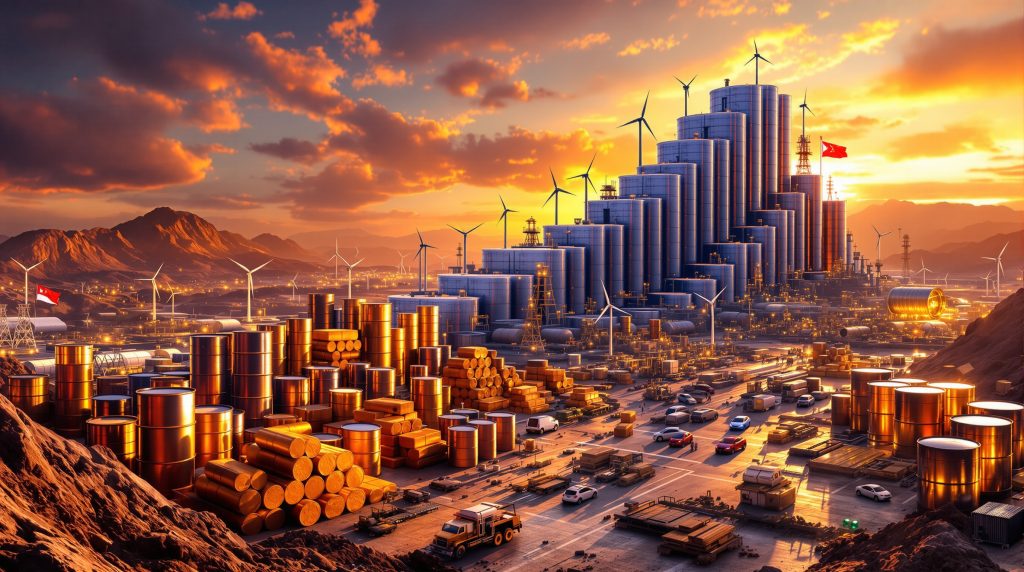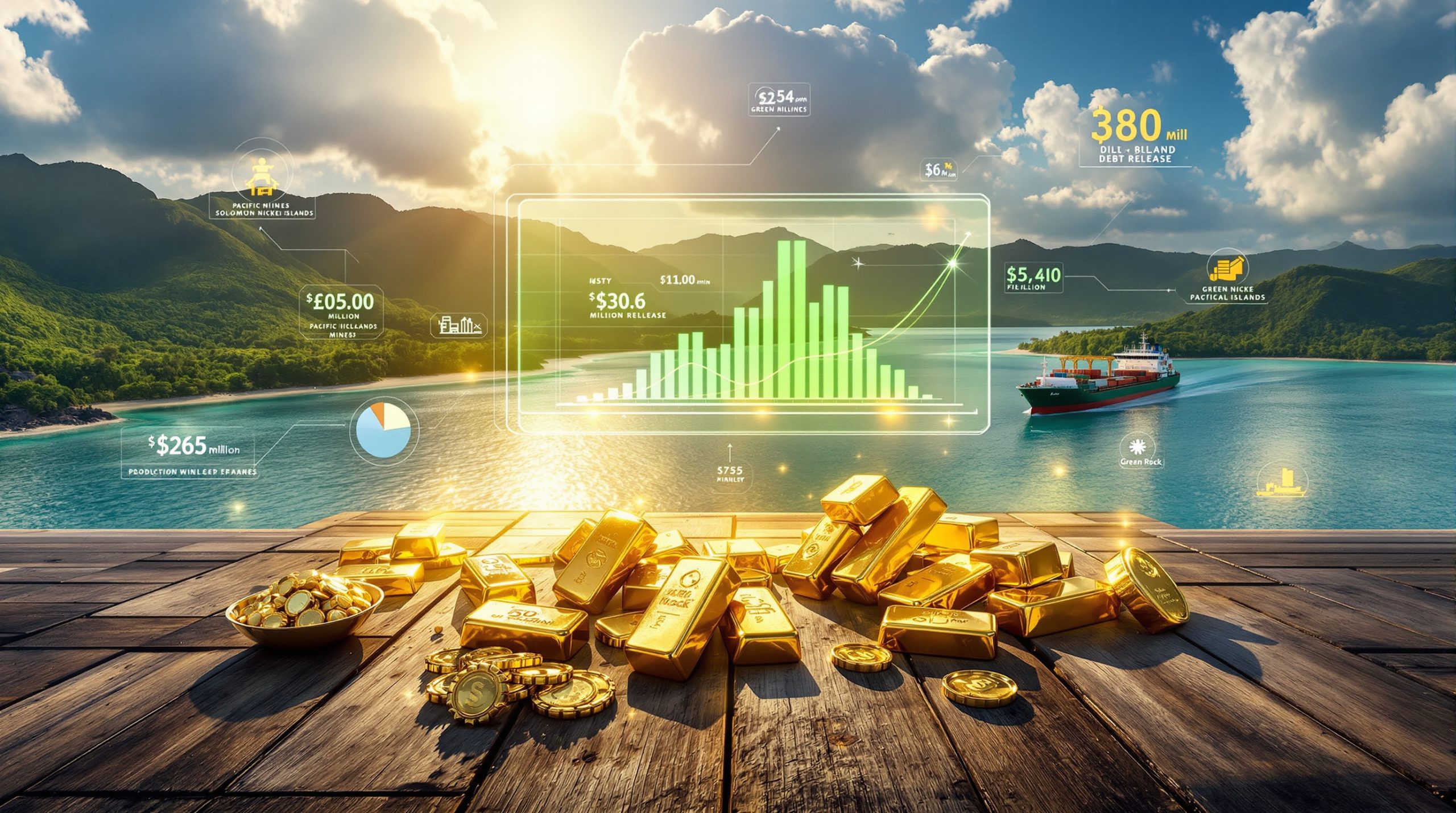Understanding the Commodities Super Cycle: Are We Entering a New Era?
A commodities super cycle represents an extended period typically lasting a decade or longer where commodity prices rise substantially above their long-term trend and maintain elevated levels. Unlike regular market fluctuations, super cycles are characterized by persistent structural imbalances between supply and demand across multiple commodity classes simultaneously. The mining industry evolution shows that these cycles fundamentally reshape resource markets for years.
Key Characteristics of Commodity Super Cycles
-
Extended Duration: These cycles typically last 10-35 years from trough to peak and back
-
Broad-Based Impact: Affects multiple commodity sectors (metals, energy, agriculture)
-
Structural Drivers: Triggered by fundamental economic transformations rather than cyclical factors
-
Supply-Demand Imbalance: Persistent gap between production capacity and consumption needs
-
Price Magnitude: Price increases of 50-300% above long-term averages
Historical Super Cycles and Their Catalysts
-
1930s-1940s: Post-Depression industrial rebuilding and WWII mobilization
-
1970s-1980s: Oil embargoes, monetary expansion, and inflation
-
2000s-2011: China's unprecedented urbanization and industrialization boom
-
Current Potential Cycle: Green energy transition and post-pandemic infrastructure investment
Why Are Experts Predicting a New Super Cycle?
Supply-Side Vulnerabilities
Geographic Concentration of Critical Resources
The production and processing of essential commodities are heavily concentrated in a small number of countries, creating significant supply vulnerabilities:
| Commodity | Top Producing Regions | Market Share |
|---|---|---|
| Copper | Chile & Peru | >40% of global production |
| Iron Ore | Australia & Brazil | >50% of global supply |
| Uranium | Kazakhstan | >40% of global mine supply |
| Rare Earth Processing | China | ~90% of global refining |
| Copper Refining | China | >40% of global capacity |
This concentration creates geopolitical leverage points that countries are increasingly willing to exploit. Recent examples include export restrictions on critical minerals energy transition during trade disputes and the inclusion of energy security commitments in international trade agreements.
Declining Resource Quality and Accessibility
The mining industry faces growing challenges in developing new supply:
-
Declining Ore Grades: The richest, most accessible deposits have largely been discovered
-
Rising Capital Intensity: New projects require substantially more investment per unit of production
-
Extended Development Timelines: From discovery to production now often exceeds 10-15 years
-
Shareholder Pressure: Focus on dividends over growth has limited exploration budgets
-
Regulatory Hurdles: Stricter environmental and social requirements extend permitting processes
Demand-Side Structural Shifts
The Electrification and Decarbonization Imperative
The global push toward renewable energy and electrification is creating unprecedented demand for metals:
-
Electric Vehicles: Require 3-4x more copper than conventional vehicles
-
Renewable Energy: Wind and solar installations are 5-10x more metal-intensive than fossil fuel power
-
Grid Infrastructure: Massive upgrades needed to support distributed generation and increased load
-
Energy Storage: Battery metals demand (lithium, nickel, cobalt) projected to grow 4-10x by 2035
AI and Digital Infrastructure Expansion
Technology giants are deploying enormous capital into AI infrastructure:
-
Data Centers: Require substantial amounts of copper, aluminum, and rare metals
-
Power Requirements: AI in mining operations and computing clusters consume 10-20x more energy than traditional servers
-
Corporate Priorities: Tech companies view securing materials as existential, making their demand inelastic
How Severe Could Supply Shortfalls Become?
Copper: The Critical Case Study
The International Energy Agency (IEA) has identified copper as a "global critical mineral" with severe supply challenges ahead:
-
Current Global Production: Approximately 22 million tons annually
-
Projected 2035 Demand: 50+ million tons annually based on stated energy transition policies
-
Announced Supply Projects: Expected to deliver only 35-38 million tons by 2035
-
Potential Supply Gap: 30% shortfall (12-15 million tons) by 2035
This isn't a temporary imbalance but a structural deficit that could persist for years or decades without massive investment in new production capacity. Recent copper price prediction models suggest this supply-demand gap will drive prices to record levels.
What Financial Factors Support a New Super Cycle?
Relative Valuation Opportunities
Current commodity prices remain significantly below previous cycle peaks when adjusted for inflation:
-
Copper: 30% below inflation-adjusted 2011 peak
-
Oil: 70% below inflation-adjusted 2008 peak
-
Bloomberg Commodities Index: 70% below previous inflation-adjusted high
This contrasts sharply with U.S. equities, where the S&P 500 has nearly tripled from its pre-2008 peak when adjusted for inflation.
Changing Investment Landscape
The traditional 60/40 portfolio (stocks/bonds) faces new challenges:
-
Persistent Inflation: Limiting central banks' ability to cut rates aggressively during economic weakness
-
Bond-Equity Correlation: Increasingly positive, reducing diversification benefits
-
Alternative Hedges: Growing investor interest in commodities as inflation and volatility hedges
Gold has already demonstrated its renewed appeal as a monetary hedge, with central banks becoming significant buyers and retail interest growing. The latest gold price analysis shows this pattern could extend to industrial commodities as investors recognize their strategic importance.
How Long Could a New Super Cycle Last?
Super cycles typically end through one of three mechanisms:
-
Demand Destruction: Aggressive monetary tightening (like Volcker's interest rate hikes in the 1980s)
-
Technological Disruption: Supply-side innovations (like the U.S. shale revolution for oil)
-
Structural Demand Shift: Major economic reorientation (China's property market slowdown)
Given the scale of the energy transition and the lengthy development timelines for new mining projects, any new commodities super cycle could potentially extend well into the 2030s before sufficient supply comes online or demand patterns fundamentally change.
What Are the Investment Implications?
Direct Exposure Strategies
For investors seeking to position for a potential commodities super cycle:
-
Resource Equities: Major diversified miners with strong balance sheets and project pipelines
-
Commodity-Focused ETFs: Baskets of physical commodities or producer equities
-
Futures and Options: For sophisticated investors with appropriate risk management
Indirect Exposure Approaches
Alternative ways to gain exposure to the theme:
-
Infrastructure Providers: Companies supplying equipment and services to resource producers
-
Downstream Processors: Businesses that refine and transform raw materials
-
Regional Exposure: Economies heavily dependent on commodity exports
What Could Derail a New Super Cycle?
Several factors could potentially prevent or shorten a new commodities super cycle:
Technological Disruptions
-
Material Substitution: Development of alternatives to critical metals
-
Recycling Innovations: Dramatically improved recovery of materials from existing products
-
Efficiency Breakthroughs: Technologies that significantly reduce material intensity
Economic Headwinds
-
Global Recession: Severe economic contraction reducing demand across sectors
-
China Slowdown: Continued deceleration in the world's largest commodity consumer
-
Monetary Tightening: Aggressive interest rate hikes to combat inflation
Policy Shifts
-
Green Transition Delays: Slowing of decarbonization initiatives due to cost concerns
-
Trade Barriers: Protectionist policies disrupting global supply chains
-
Resource Nationalism: Government intervention in commodity markets
Are We Already in the Early Stages?
Several indicators suggest the early phases of a super cycle may already be underway:
-
Price Movements: Many commodities have rebounded significantly from 2020 lows
-
Supply Constraints: Production growth remains limited across multiple sectors
-
Capital Allocation: Resource companies maintaining capital discipline despite higher prices
-
Strategic Positioning: Nations securing long-term supply agreements for critical materials
However, the definitive confirmation typically comes only in retrospect, as commodity super cycles tend to develop gradually before accelerating. According to the 2000s commodities boom pattern, early signs can be subtle before dramatic price appreciation occurs.
How Can Countries and Companies Prepare?
National Strategies
-
Strategic Reserves: Building stockpiles of critical materials
-
Supply Chain Resilience: Diversifying sources and developing domestic processing capacity
-
Regulatory Streamlining: Accelerating permitting for strategic resource projects
Corporate Approaches
-
Vertical Integration: Securing upstream supply through partnerships or acquisitions
-
Technological Hedging: Investing in material efficiency and alternative technologies
-
Long-Term Contracting: Locking in supply through multi-year agreements
Conclusion: The Perfect Storm for Commodities?
The confluence of structural supply constraints, transformative demand drivers, and supportive financial conditions creates a compelling case for a new commodities super cycle. While timing such macro shifts is challenging, the underlying conditions appear increasingly favorable.
Unlike previous cycles driven primarily by a single factor (like China's urbanization), today's potential super cycle stems from multiple converging forces: the green energy transition, digital infrastructure expansion, geopolitical fragmentation, and years of underinvestment in production capacity.
Whether this develops into a full-fledged super cycle remains to be seen, but the structural imbalances between supply and demand across multiple commodity classes suggest that higher prices may be needed to incentivize the massive capital investment required to close the gap.
Further Exploration:
Readers interested in learning more about commodities market trends can also explore related educational content on Livewire Markets, which regularly publishes market analysis and industry perspectives on resource sector developments.
Want to Profit from the Next Major Mineral Discovery?
Stay ahead of market shifts in the potential new commodities super cycle with Discovery Alert's proprietary Discovery IQ model, delivering instant notifications on significant ASX mineral discoveries as they happen. Explore why historic discoveries can generate substantial returns by visiting the Discovery Alert discoveries page and begin your 30-day free trial today.




